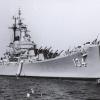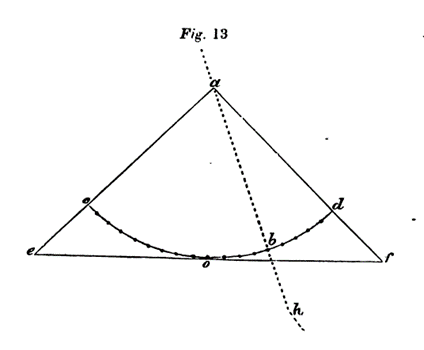
Steve20
NRG Member-
Posts
168 -
Joined
-
Last visited
About Steve20

Profile Information
-
Location
Gosport, England
Recent Profile Visitors
-
 FrankWouts reacted to a post in a topic:
HMS Winchelsea 1764 by Trussben - FINISHED - 1:48
FrankWouts reacted to a post in a topic:
HMS Winchelsea 1764 by Trussben - FINISHED - 1:48
-
 Archi reacted to a post in a topic:
Scantlings of Gratings
Archi reacted to a post in a topic:
Scantlings of Gratings
-
 BANYAN reacted to a post in a topic:
Scrapped Submarine
BANYAN reacted to a post in a topic:
Scrapped Submarine
-
 Amalio reacted to a post in a topic:
HMS Victory Renovation - Outer Planking Removed
Amalio reacted to a post in a topic:
HMS Victory Renovation - Outer Planking Removed
-
 bruce d reacted to a post in a topic:
Gun Carriage questions
bruce d reacted to a post in a topic:
Gun Carriage questions
-
 NavyShooter reacted to a post in a topic:
HMS Victory Renovation - Outer Planking Removed
NavyShooter reacted to a post in a topic:
HMS Victory Renovation - Outer Planking Removed
-
 Archi reacted to a post in a topic:
Gun Carriage questions
Archi reacted to a post in a topic:
Gun Carriage questions
-
 Archi reacted to a post in a topic:
Gun Carriage questions
Archi reacted to a post in a topic:
Gun Carriage questions
-
 cotrecerf reacted to a post in a topic:
Archaeological Paper on the Wreck of HMS Swift 1763
cotrecerf reacted to a post in a topic:
Archaeological Paper on the Wreck of HMS Swift 1763
-
 uss frolick reacted to a post in a topic:
Archaeological Paper on the Wreck of HMS Swift 1763
uss frolick reacted to a post in a topic:
Archaeological Paper on the Wreck of HMS Swift 1763
-
 Steve20 reacted to a post in a topic:
A Safety Mask that checks if the face seal is leaking
Steve20 reacted to a post in a topic:
A Safety Mask that checks if the face seal is leaking
-
 Steve20 reacted to a post in a topic:
HMS Winchelsea 1764 by Rustyj - FINISHED - 1:48
Steve20 reacted to a post in a topic:
HMS Winchelsea 1764 by Rustyj - FINISHED - 1:48
-
 Steve20 reacted to a post in a topic:
HMS Winchelsea 1764 by Nunnehi (Don) - FINISHED - 1:48
Steve20 reacted to a post in a topic:
HMS Winchelsea 1764 by Nunnehi (Don) - FINISHED - 1:48
-
 Steve20 reacted to a post in a topic:
HMS Winchelsea 1764 by Nunnehi (Don) - FINISHED - 1:48
Steve20 reacted to a post in a topic:
HMS Winchelsea 1764 by Nunnehi (Don) - FINISHED - 1:48
-
 Steve20 reacted to a post in a topic:
HMS Winchelsea 1764 by Nunnehi (Don) - FINISHED - 1:48
Steve20 reacted to a post in a topic:
HMS Winchelsea 1764 by Nunnehi (Don) - FINISHED - 1:48
-
 Steve20 reacted to a post in a topic:
HMS Winchelsea 1764 by Nunnehi (Don) - FINISHED - 1:48
Steve20 reacted to a post in a topic:
HMS Winchelsea 1764 by Nunnehi (Don) - FINISHED - 1:48
-
 Steve20 reacted to a post in a topic:
HMS Winchelsea 1764 by Kusawa2000 (Mike Draper)
Steve20 reacted to a post in a topic:
HMS Winchelsea 1764 by Kusawa2000 (Mike Draper)
-
 Steve20 reacted to a post in a topic:
HMS Winchelsea 1764 by Edwardkenway- 1:48
Steve20 reacted to a post in a topic:
HMS Winchelsea 1764 by Edwardkenway- 1:48
-
 Steve20 reacted to a post in a topic:
HMS Winchelsea 1764 by Edwardkenway- 1:48
Steve20 reacted to a post in a topic:
HMS Winchelsea 1764 by Edwardkenway- 1:48
-
 Steve20 reacted to a post in a topic:
HMS Winchelsea 1764 by Edwardkenway- 1:48
Steve20 reacted to a post in a topic:
HMS Winchelsea 1764 by Edwardkenway- 1:48
-
Archaeological Paper on the Wreck of HMS Swift 1763
Steve20 posted a topic in Nautical/Naval History
Attached is an Argentine archaeological paper on HMS Swift, a 14-gun sloop-of-war. She was launched in 1763 and went down off Patagonia in 1770. The paper is dated 2006, so the archaeology findings may not be the latest, but the paper contains some interesting information. Archaeological Research on HMS Swift.pdf -
Archaeological Evidence for the Development of RN Gunnery
Steve20 replied to Steve20's topic in Nautical/Naval History
The Elements and Practice of Naval Architecture, 2nd Edition, 1812, David Steele. For scantlings of shot racks on upper, middle and lower (gun) decks, Steele states ‘.......the upper sides gouged and hollowed to the size of the shot at one-third of its diameter, keeping the shot two inches asunder in the clear.' Elsewhere, in a general statement, Steele states that shot garlands '.......fitted against the head ledges and coamings of the hatch and ladderways, or against the side between ports, to contain the shot; for which purpose they are hollowed out to near one third of the shot diameter, so that the balls lie in them about one inch asunder.' By 'asunder' Steele means apart. A hollowed out depth of one-third of the shot diameter doesn't seem a lot, so this tends to give weight to the argument that shot was kept in place, by some means or other, when the ship was heavily rolling and pitching. -
Archaeological Evidence for the Development of RN Gunnery
Steve20 replied to Steve20's topic in Nautical/Naval History
I would just like to add more clarification to my last post. Elliot’s work in improving concentration of fire entailed the accurate pointing of individual guns, and reading Steven’s description of Elliot's method of achieving this (Steven’s, page 40-43), it does looks like Elliot's experimental work would have been done using perhaps a few guns. The resultant triangle or quadrant boards, once fully developed, could then have been placed in any ship for broadside configuration and final testing. Some Description of the Methods Used in Pointing Guns at Sea, Captain John Stevens, Extract from pages 40&41. Triangle or quadrant boards were constructed (see fig.13), containing a quarter of a circle, described from the apex of the triangle a, with a radius of about one foot, the arc, c d, being divided into degrees, or points, half points, &c. These boards are placed behind the gun on the deck, with the base, e f, parallel to the keel, and the centre of the circle, a, in the axis of the piece prolonged to the rear (i.e., in the vertical plane in which the axis lies). During the time the gun is being trained the board is moved also, in order that its relative position to the gun, as above described, may be preserved. The trigger line is held so as to coincide with the axis of the gun, prolonged to the rear, as a h ; ……... -
Archaeological Evidence for the Development of RN Gunnery
Steve20 replied to Steve20's topic in Nautical/Naval History
Hi Gary, Thanks for the input. I do think John Stevens wording on Captain Elliot is not as clear as it could be. When he says it was believed Elliot enhanced the method of concentrating fire on board Victory (page 40) his meaning was that Elliot’s work on Victory was experimental. Elliot probably only needed a few guns for his trials and these could be moved around the Victory decks if needs be. Elliot would not have needed to fire a broadside. Stevens says that it must have taken Elliot much ingenuity, care, and labour to perfect the application (the enhanced method that is) and this would be consistent with Elliot having plenty of time on his hands because Victory was at the time only a guard ship. Reading the text a few times, this does seem to be the case to me, and this then leads one to conclude that Victory was probably used to further develop the method of gunnery that was applied by Brooke on the Shannon. -
Archaeological Evidence for the Development of RN Gunnery
Steve20 replied to Steve20's topic in Nautical/Naval History
I don't want to move away from the subject of how shot was secured on deck - I hope someone can come up with a definitive explanation to this. In the meantime, here’s a document on naval gunnery that may be of interest to some. It was published in 1834 and written by Captain John Harvey Stevens, Royal Marine Artillery, Director of the Laboratory of Instruction Portsmouth. It’s titled ‘Some Description of the Methods Used in Pointing Guns at Sea’. For those, like me, who prefer to flick through the technical parts you'll find that it touches on Congreve Rockets, gun sights, and how the Shannon gunnery was performed. It also corroborates Daniel Pascoe on breast pieces and/or sweeps in that they were used to stop gun carriage trucks jamming in the waterways during oblique pointing. What's more, it has interesting diagrams of the Congreve and Hookham sights on the last page. Some description of the methods used in pointing guns at sea 1834.pdf -
HMS Victory Renovation - Outer Planking Removed
Steve20 replied to Steve20's topic in Nautical/Naval History
Have you tried the ordnance records at The National Archives (TNA). They have information on the fitting and arming of warships. https://www.nationalarchives.gov.uk/help-with-your-research/research-guides/board-ordnance/ As well as looking for the issue of carronades to ships, it would be worth looking for the issue of 68 pound shot and other carronade specific shot size. A less likely possibility is the TNA ADM records (Admiralty, and Ministry of Defence, Navy Department: Correspondence and Papers). -
Archaeological Evidence for the Development of RN Gunnery
Steve20 replied to Steve20's topic in Nautical/Naval History
I note, though, that Daniel Pascoe is not so sure about this: Page 372. The Hazardous and Great Storm Wrecks are providing a much better understanding of the different types of shot and how it was stored and distributed around the ship. The evidence from the Hazardous in particular shows that there were several types of shot, all of which served a different purpose, and their location on the gundecks demonstrates that the ship was prepared to use all types immediately. However, what is still poorly understood is how the shot would have been secured on the decks so as not to be a danger to crew or equipment. In the conditions that the Hazardous was lost in one would expect that the shot must have been secured in a way that stopped it coming out of its holders. The evidence from the Stirling Castle demonstrates that the guns were given double security during rough conditions and I suspect equal attention would have been given to the shot to avoid serious injuries from this becoming loose. -
Archaeological Evidence for the Development of RN Gunnery
Steve20 replied to Steve20's topic in Nautical/Naval History
Thanks Dan, Gravity it seems to be, then, as there's no other explanation. I guess the people in those days must have long since determined the depth of concavity required and took it for granted that everyone knew it. -
Archaeological Evidence for the Development of RN Gunnery
Steve20 replied to Steve20's topic in Nautical/Naval History
There're some answers to questions here, Allan, and some new questions, also. But more than anything, I'm reminded that the crews of these ships were highly skilled and the masters of improvisation. They would think nothing of striking topmasts in a gale or building a boat out of the wreckage of their own ship to effect a self-rescue. Modifying gun carriages, and other gear, to make it better suit its purpose must have been routine for them, so variations to the norm must be more common than we might have expected. -
Archaeological Evidence for the Development of RN Gunnery
Steve20 replied to Steve20's topic in Nautical/Naval History
This question is most perplexing as the archaeological findings prove that cannon balls were kept on deck, even though the crew must have known that weather conditions were deteriorating. Similarly, there would have been times when the ship was hit by a sudden change of weather, such as a squall, yet loose shot doesn’t seem to have been reported as a problem. It’s hard to believe that the racks on deck alone would have kept the shot secure when sea conditions worsened, yet there doesn’t seem to be a method of keeping the shot in place that’s really plausible. -
Archaeological Evidence for the Development of RN Gunnery
Steve20 replied to Steve20's topic in Nautical/Naval History
As they've found no evidence of how the shot was kept in place it must have been with something that's since disintegrated - so could be netting. -
Attached is a dissertation written by marine archaeologist Daniel Pasco and titled ‘Archaeological Evidence for the Development of RN Gunnery from 1545- 1811’. It focuses on evidence from the wrecks of the London (blew up 1665), Hazardous (wrecked 1706), Invincible (wrecked 1758), Colossus (wrecked 1798), and the St George (wrecked 1811). It has a lot of very interesting information; far too much to summarise here, and many of the findings deserve a topic of their own. If you have an interest in naval gunnery during this period, I recommend you read it. The dissertation made me realize the importance of archaeology in filling the gaps in the historic record and appreciate that archaeology uncovers what was actually done rather than how it should be. It’s disappointing that there’s such a lack of funding for maritime archaeology otherwise we’d see more papers like this. What’s worse, though, is that a lot of archaeologic evidence is being lost forever. Here is the dissertation (note that it's 47MB): Archaeological Evidence for the Development of RN Gunnery.pdf Here’s a link to Daniel Pascoe’s website, which has more interesting information. https://pascoe-archaeology.com/
-
A beautifully finished model, Rusty.
- 642 replies
-
- winchelsea
- Syren Ship Model Company
-
(and 1 more)
Tagged with:
-
Hazardous dust is the same whether you breath it in your hobby or at your work. The air filtration on the above mask is good, but equally important to me is knowing that nothing is slipping in through the face seal. This has happened to me, and others, at work (oil & gas construction) and I only noticed it when small particles got into my mouth, which happened more than once. Very small dust particles getting into the lungs would not be noticed. I’m not saying this is a common occurrence, but real-world situations (which includes those at home) can cause a reduction in face seal integrity, therefore, I like having a mask where I can check on this. The reason I posted this here was just to let people know about another product that they can throw into the pot when making their buying decision.
About us
Modelshipworld - Advancing Ship Modeling through Research
SSL Secured
Your security is important for us so this Website is SSL-Secured
NRG Mailing Address
Nautical Research Guild
237 South Lincoln Street
Westmont IL, 60559-1917
Model Ship World ® and the MSW logo are Registered Trademarks, and belong to the Nautical Research Guild (United States Patent and Trademark Office: No. 6,929,264 & No. 6,929,274, registered Dec. 20, 2022)
Helpful Links
About the NRG
If you enjoy building ship models that are historically accurate as well as beautiful, then The Nautical Research Guild (NRG) is just right for you.
The Guild is a non-profit educational organization whose mission is to “Advance Ship Modeling Through Research”. We provide support to our members in their efforts to raise the quality of their model ships.
The Nautical Research Guild has published our world-renowned quarterly magazine, The Nautical Research Journal, since 1955. The pages of the Journal are full of articles by accomplished ship modelers who show you how they create those exquisite details on their models, and by maritime historians who show you the correct details to build. The Journal is available in both print and digital editions. Go to the NRG web site (www.thenrg.org) to download a complimentary digital copy of the Journal. The NRG also publishes plan sets, books and compilations of back issues of the Journal and the former Ships in Scale and Model Ship Builder magazines.






